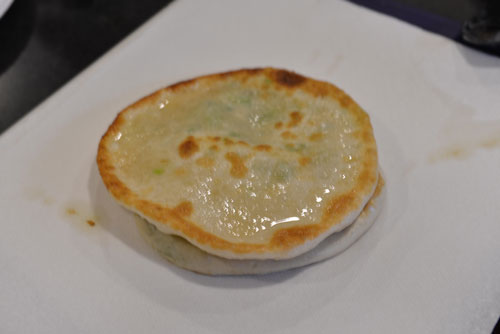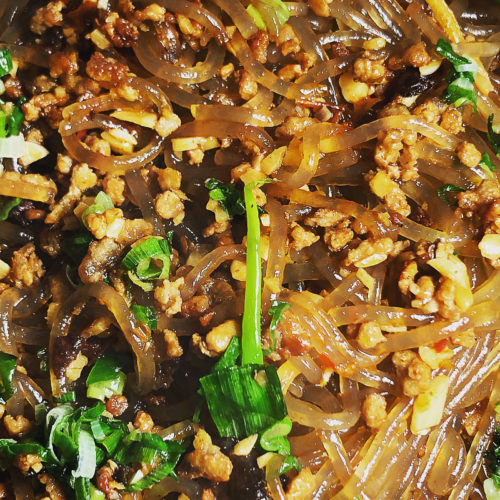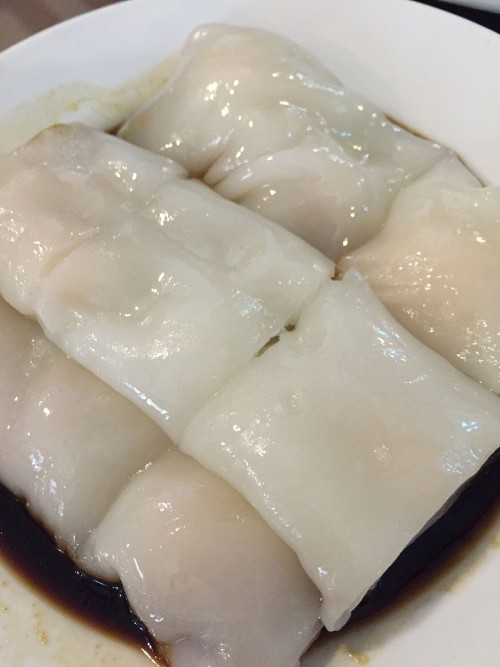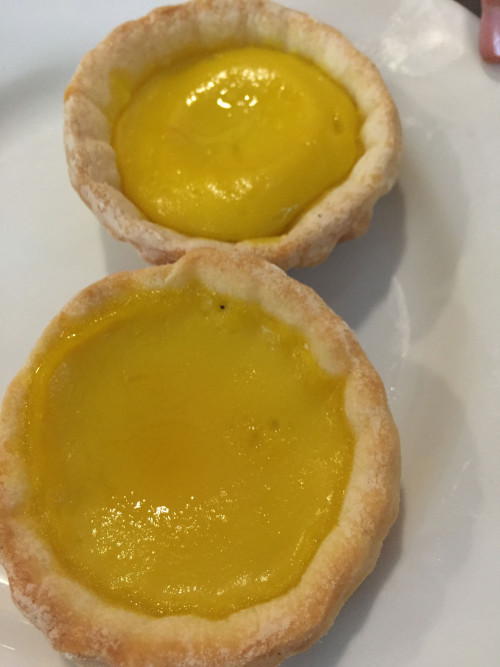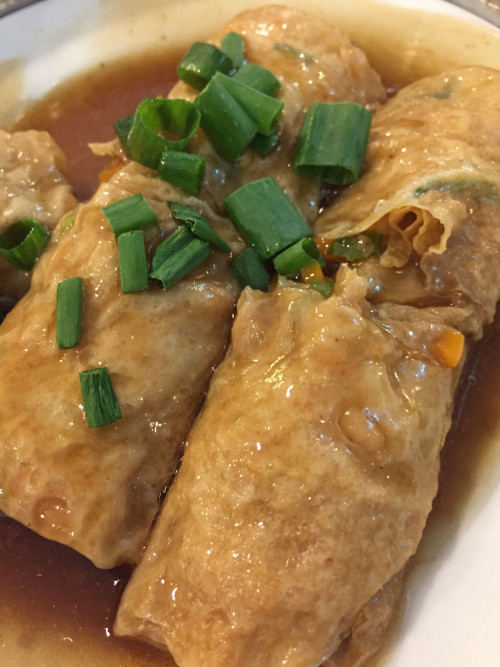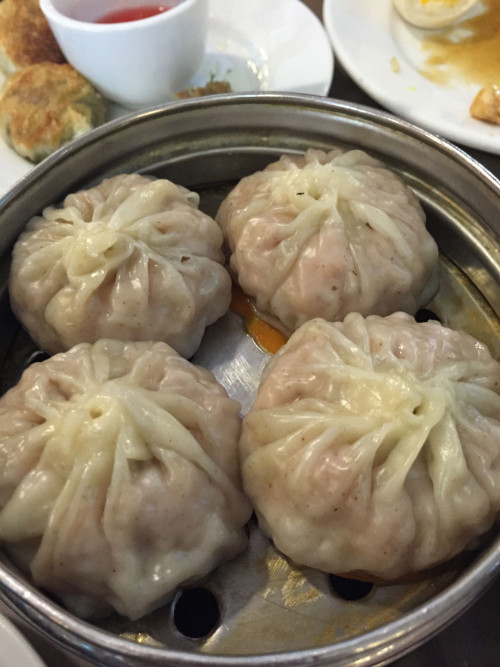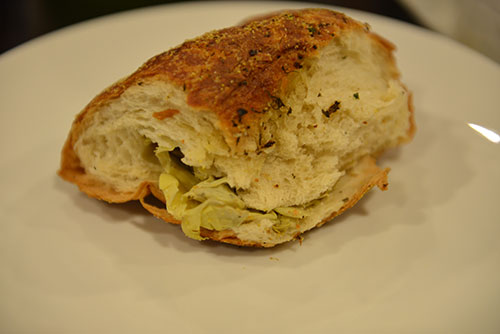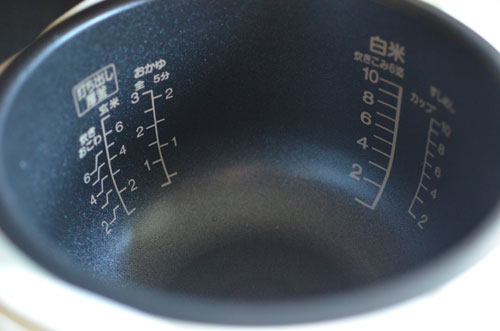This is my way of making green onion pancakes or 葱油饼. It is not the traditional way.
1. Boil a cup of water.
2. Measure 10 oz. of all purpose flour and pour into a food processor.
I don’t use anything special. Just the industrial size bag of flour from Costco. I’ve tried countless green onion pancake recipes, and never without success. The pancakes would always end up hard like a cracker, so I abandoned the printed proportions and made the dough by sight and touch. Better, but inconsistent. After reading The Science of Good Cooking by Cook’s Illustrated/America’s Test Kitchen, which explained how measuring flour by volume was imprecise, I switched over to measuring flour by weight. My dough is now consistently soft.
by Cook’s Illustrated/America’s Test Kitchen, which explained how measuring flour by volume was imprecise, I switched over to measuring flour by weight. My dough is now consistently soft.
3. Measure 6.25 oz. of boiling water, slowly pour it into the food processor as it is running, and let it run for a few minutes after the dough has come together.
I place a liquid measuring cup on the kitchen scale, zero it, and then ladle the boiling water into the measuring cup. The pyrex measuring cup makes it easy to pour the water into the food processor. After the dough comes together, I let the food processor run for about two minutes. The end product looks something like this:
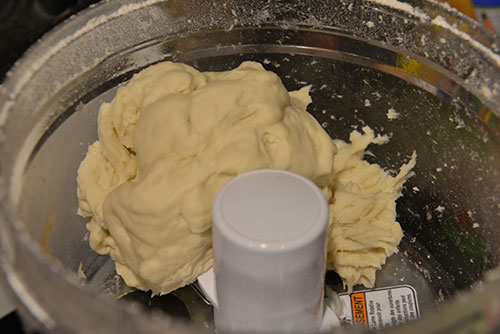
Note: 6.25 oz is about right for the 25 lb bag of Costco flour. I recently switched to the smaller 2-10 lb bags of organic unbleached all purpose flour (also from Costco). I had to add a touch more water–6 3/8 oz–or else the dough ended up a bit dryer.
4. Remove the dough and knead it a few time. Cover the dough and let it rest for 20 minutes.
In a small rimmed baking sheet, I add a bit of flour. I use a rimmed baking sheet just to keep the flour from getting everywhere. I also dust my hands with flour and remove the dough from the food processor. On the baking sheet, I knead the dough a few times until it is in the shape of a ball. Use just enough flour to keep it from sticking. I then line a large bowl with a sheet of parchment paper, drop the dough ball inside, and cover with plastic wrap.
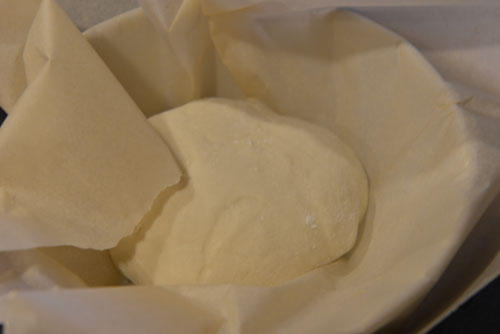
5. Chop the green onions and clean up the food processor.
Now is a good time to clean up the food processor before the remnant dough dries out. Also, chop about 2-3 stalks of green onion.
6. After 20 minutes, cut a wedge of dough. Heat up a flat bottom pan on low heat.
I had a sharp scraper that came with the food processor. I cut a wedge that is 1/6th of the dough ball so that I end up with six green onion pancakes. Now is a good time to heat up a pan. I cook my pancakes on low heat. So some oil and let the pan slowly warm up.
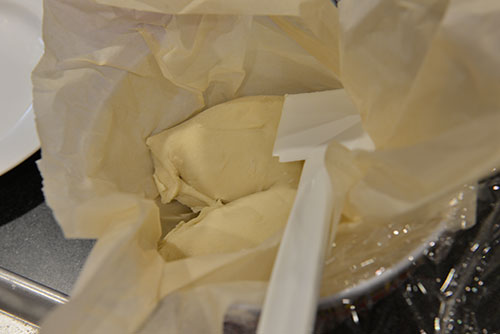
7. Roll the wedge into a ball, and then use your thumbs to press a dimple into the dough.
Again, I dust my hands with flour, grab the wedge and shape it into a ball. I use my thumb to press down the center of the dough, while turning it around to make the center even. This is the non-traditional part. Every other recipe will tell you to roll out the dough, spread the green onion/sesame oil/salt mixture, and roll up the dough into a log. Then, coil it like a snail shell before flattening it again with a rolling pin. I’ve always had problems with the green onions bursting out and blackening during the cooking process so I do it my way.

8. Fill the dimple with chopped green onions.
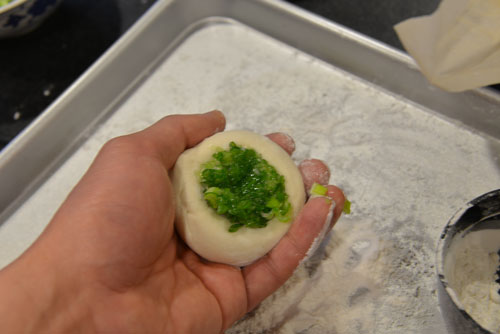
9. Close up the dough.
Hopefully, this part will not be too confusing. The best way to describe this is like if I were making a bun/bao. I pull up the opposite sides of the dough until the green onion is covered, pinch the top together, and give it a twist.
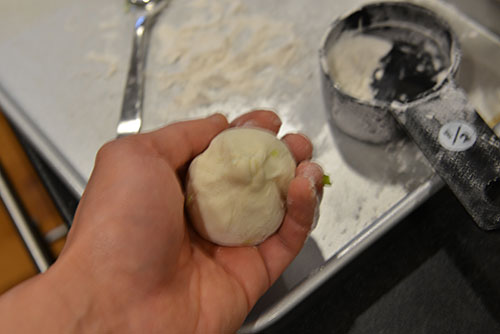
9. Add a pinch of kosher salt and gently roll out the pancake.
Try to keep the green onions inside the pancake.

10. Cook the pancake.
Hopefully, the pan is hot by now. I might 1-2T of oil into the pan. I just want enough so that the pancake is in contact with the oil so that it will cook evenly. I cook the pancake in a covered pan for a few minutes. It all depends on the heat of the pan. Once the pancake is cooked on one side (I go by looks), I might add some more oil back in the pan as I am flipping it over to cook the second side. Hopefully, the end product will look like this:
